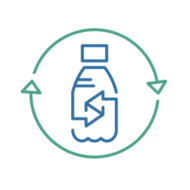To check for water contaminants in your water supply, you can follow these steps:
- Local Water Quality Report: In many countries, local governments or water suppliers are required to provide annual water quality reports to residents. This report, often referred to as a Consumer Confidence Report in the United States, details the quality of your water, including the levels of various contaminants. Check your local water supplier’s website or contact them directly to access this report. Here’s a helpful tool: EWG Tapwater Database
- Home Water Testing Kits: These kits are available at many hardware and home improvement stores. They typically include instructions and tools for collecting a water sample and analyzing it for common contaminants like lead, pesticides, bacteria, and hardness. However, these kits vary in accuracy and may not test for all types of contaminants.
- Laboratory Testing: For a more comprehensive analysis, you can send a sample of your water to a certified laboratory. These labs can test for a wide range of contaminants, including those not covered by home testing kits. This option is usually more expensive but provides a more detailed and accurate assessment.
- Assessing Water Source and Environment: Consider the source of your water and the environment around it. For example, if you live near industrial areas, agricultural land, or areas with known contamination issues, your water may be at higher risk for certain types of pollution.
- Professional Assessment: If you’re concerned about the quality of your water, a professional assessment from a certified water quality expert can provide thorough testing and recommendations for filtration or treatment solutions.
Remember to consider the specific concerns you have about your water (like taste, odor, discoloration, or specific health concerns) when choosing a testing method, as different tests target different contaminants.
